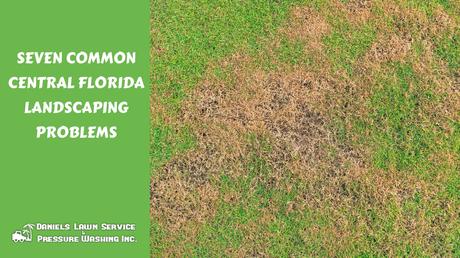
Having a landscape that expresses Central Florida's semi-tropical climate and lifestyle is a dream of many homeowners. But whether you're new to The Sunshine State or new to having your own yard to care for, there are certain challenges you're likely to face. Some may stem from lack of experience. However, others involve our area's climate, soil composition and topography.
Other mistakes typical of poor planning include the following:
- Planting shrubs, bushes and trees too close to structures.
- Planting too close to other plants.
- Not knowing when to plant for optimum growth or peak blooming season.
University of Florida IFAS Gardening Solutions sums up the situation the best: "Good, nutritious soil is the basis for any plant's success. To the frustration of many gardeners, Florida's 'soil' is mostly sand." But not just any sand! "This gray, fine soil is called Myakka, (pronounced My-yakah), an Indian word for 'big waters.' Only found in Florida, Myakka covers the majority of the state - more than 1½ million acres - and is actually our official state soil."
University of Florida IFAS Gardening Solutions recommends the following:
"Once you have the results, you can choose plants that are adapted to your conditions. Most plants do best in a slightly basic soil, but some, like blueberries and azaleas, prefer strongly acidic soils."
Choose a fertilizer based upon the composition of your soil, and plan a regular fertilization schedule. Taking these steps will help ensure your sandy Florida soil provides all the nutrients required for lush, robust plant growth.
Loose, dry soil can wash away easily during heavy rains, particularly on hilly or sloped areas of your yard. In such cases, irrigation may assist in slowing the soil loss, but it is not sufficient to solve the issue completely. Water follows the direction of least resistance. If you come across rainwater flowing along a particular route in your lawn, erosion may not be far behind. To stop the loss of soil or grass, consider adding gravel or building terraced landscaping in the affected areas. These techniques help redirect and slow down the flow of water to prevent erosion.
Some long-term measures to solve erosion issues include the following:
Growing native plants - The root systems of native plants and grasses work to keep your lawn's underlying soil in place and prevent erosion. This is because the plants are already acclimated to the soil conditions and environment - which also will allow them to grow faster and last longer.
Retaining walls - In steeper regions of your yard, you can build retaining walls to hold soil in place, thereby effectively preventing erosion.
Hardscaping - Features like dry creek beds, pavers, or rock borders can help in slowing down water movement while retaining soil.
Mulching is one of the easiest methods to keep your yard looking great. It safeguards your soil from erosion and assists in keeping your plants healthy by regulating the soil temperature and retaining moisture. Mulching also helps to suppress weed growth and ensure that your lawn looks well-maintained.
When applying mulch around trees and shrubs, avoid piling the mulch directly against the trunk or base. Mulch retains moisture and is excellent for insulation; however, when it is touching the trunk it causes rotting. Instead, lay the mulch around your plants in a doughnut shape, leaving a few inches between the mulch and the base of the trunk. This benefits the root system while preventing rotting.
Fungus usually grows in moist conditions where a lot of decaying organic matter is present. Fungicides address current growth, but the best approach is to prevent its growth in the first place. Make sure that your lawn is draining consistently and properly, and remove all debris, such as old mulch or rotting logs, as they will prompt mushroom growth.
Moreover, overwatering your yard could lead to grass rust. This is an umbrella name for several species of a fungus called or . The yellowish-orange dots on grass blades are actually its spores. Grass rust is most likely to develop in the summer or early fall when temperatures are warm and humidity is high. According to This Old House , "The best way to prevent lawn rust is to invest in the general health of your lawn. A robust, healthy lawn is better able to fend off all types of grass disease, and regular lawn care is a big part of the equation."
Don't Stress Over Your Central Florida Yard - Enjoy It!
Your Central Florida yard should be your slice of paradise - not a source of stress! Don't feel that you need to face its challenges alone. Call our professionals at Daniel's Lawn Service & Pressure Washing for landscape design , tree installation, tree trimming, yard maintenance, pressure washing and so much more. today so we can do the work, and you can do the enjoying! We proudly serve all of Central Florida - including Orlando, Sanford, Longwood and Lake Mary! We look forward to helping you achieve your goals and bring your vision to life!

